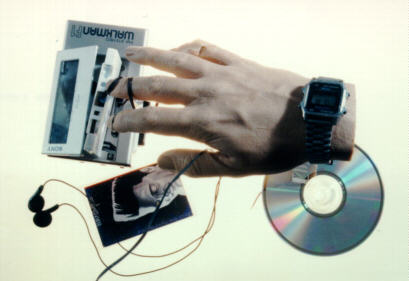

Photography has been a passion since University but, like most students, I could hardly afford to pay the rent let alone consider buying the kind of camera which could do justice to real ideas. Some seventeen years ago, on my way into a still backward China, Hong Kong was a revelation to a poor photographer; quality equipment that was cheap, immediately accessible and with each retailer willing to discount just that little bit more to win your business. I 've never regretted following the advice of one particularly inspiring lecturer who, after an illustrious career in advertising, decided to pass on what he had learnt in the real world rather than retire disgracefully somewhere and keep it all to himself. "A camera is only as good as it's glass, spend on the lens first, then the camera" was the sage advice that I remembered when, after negotiating my way through countless camera shops, I spent more than I could afford on a Nikon FA and 55mm. Micro-Nikkor. One store happened to specialise in Pentax equipment, while I was not particularly interested in the cameras I did spy a device which promised to deliver three dimensional images through a lens attachment and viewer. Intrigued by the promise and the affordability I purchased a Pentax Stereo Adaptor II and set about finding out what it could do as we travelled on through China.
The trusty beam splitter had been taken out on occasion and used to create some fascinating images but it always seemed so limited, like a miniature peep show for the uninitiated viewer, more of a curiosity than a tool. I only later became intrigued by the possibility of making prints with the device after associating the short lived 'magic eye' phenomenon with pairing real, photographic images instead of those particularly monotonous computer generated patterns. The apparently arcane science of stereoscopy only became known to me following a frustrating period of trying to convince people that these two seemingly identical prints before them were in combination a fully three dimensional image. My efforts to find out how I could convince others that free viewing was a 'reality ' led to a variety of research areas and references from Wheatstone and Brady to Julesz and Burder. Of course stereoscopy had been there all the time and it was simultaneously frustrating and exciting to find out that there were other people out there who understood and could free view, despite the apparently huge bias towards transparencies, viewers and cumbersome projection systems. I found out about the ISU after coming across Tom Johnstone 's book 'Magic 3-D' and immediately signed up in the hope of absorbing as much accumulated information as possible. I must say that from the point of view of a complete novice the first issues I received of 'Stereoscopy' seemed to be directed more at those interested in applied pure mathematics than image making but it was wonderful none the less to hear of such undreamed of items like the RBT, twinned and slide bar cameras. After reading Burder & Whitehouse 's 'Photographing in 3-D' and Waack's 'Stereo Photography' I had found the door. The key to this door was the realisation that I already had a perfect ready made 'slide bar' in my camera bag. The base bracket from a Metz 60CT-l flash unit has a tripod socket and sliding camera base socket on a metal bar, with rubber insert, of 21cms length, perfect. I engraved the leading edge of the bracket with an accurate scale, placed a similar mark at shutter centre at the base of my trusty Nikon and was reinvigorated with the promise of full-frame 3-D images.
These discoveries have reinvigorated my deep interest in photography as an art with possibilities now widened but after reading the minutes of the May 25th. ISU Council Meeting I became very concerned about a number of matters that I respectfully raise here and with your understanding of my status as a mere noviciate. I believe that if there is any problem having the ISU survive well into the next century it lies with promotion, or lack thereof. I am 42 years old but judging from some of the negative comments about the Internet I get the impression that much of the membership is less aware of how the new technologies would serve to strengthen the organisation and it's journal. In fact it was through the Internet that I was able to garner much of the information that led to my joining the ISU in the first place, if 'Stereoscopy' itself were published, at least in part, on the net it would enable a potentially huge audience to access an 'appetiser ' gallery of images and information that would enable not only the reproduction of colour photographs but also provide a forum for discussion, dissemination of ideas and downloading of membership forms! It would also go some way towards eliminating the three month delay between publishing and receipt of the Journal by many distant members. The sites currently devoted to 3D and stereoscopy are interesting but could be just the tip of the iceberg With improved image quality and diversity of subject matter the attractions would speak for themselves and attract more of the millions of photographers out there who have never heard of nor seen what stereo is capable of.
Perhaps I am a little slow but it took me a long time to find out about the existence of the ISU, NSA et al, if a promotional brochure were sent to each national representative and they in turn published one in their country's leading photography magazine and/or university photography course booklet, the interest would surely snowball. The argument about cost seems spurious, despite my own modest income the annual dues seem to me remarkably cheap, I could no more afford a trip to Rolduc [site of the ISU 1997 International Congress] than fly to the moon but a quarterly journal of US$20 with international content has got to be good value. If 'Stereoscopy' could incur any criticism it would only be the absolute paucity of images, for an organisation of over 700 international members that is essentially devoted to the 3-D w there are surely more engaging photographs out there than snapshots of union members and certainly ones that are more deserving of a half page reproduction. I have also been wondering why the organisation does not represent it's function and existence with a stereo logo, if it is good enough for the Stereoscopic Society [U.K.] why not the ISU, how about a competition amongst members?
As for my own humble offerings, these images were taken with the aforementioned equipment and illustrate a growing interest in playing with the 'trompe l'oeil' of stereoscopy by floating' variously textured objects on undefined planes. Just to illustrate the superlatives of my home town I apologise for including some standard, gratuitous railway shots ( is this the great cliche of 3-D photography? ), but Albury does boast the longest railway platform in the Southern Hemisphere.
I would love to hear from any other stereoscopists out there who, like me, see free viewing as the
most egalitarian form of spreading the gospel, so to speak. If the practice is, or becomes, the sole
province of those initiated into 'the knowledge' and dominated by equipment intensive methods
of production and viewing then the membership will disappear through natural attrition and it
will become increasingly difficult to attract any new members in the first place.
 |
 |
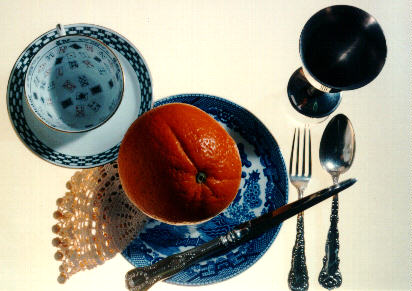 |
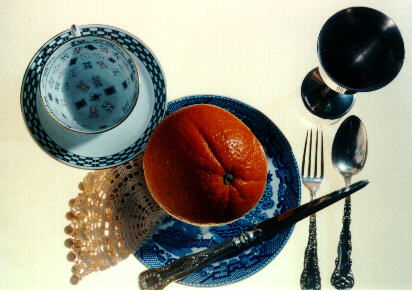 |
 |
 |
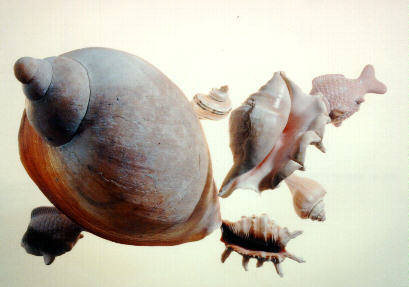 |
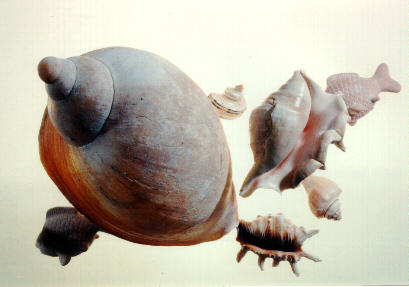 |
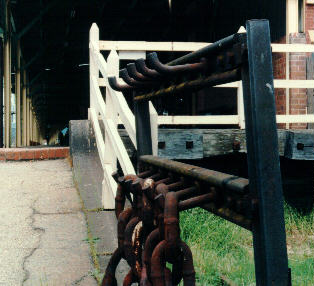 |
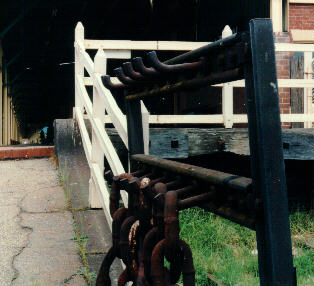 |
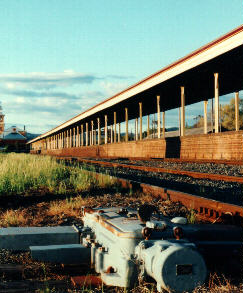 |
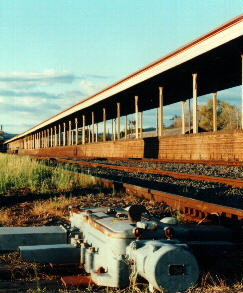 |